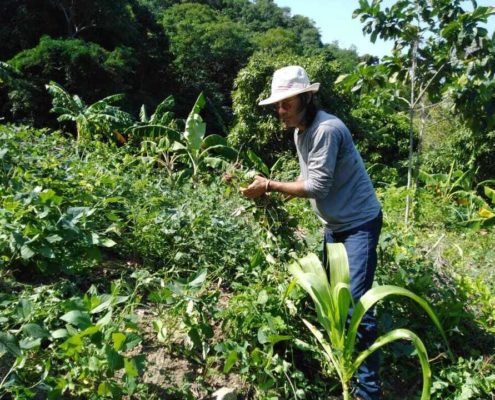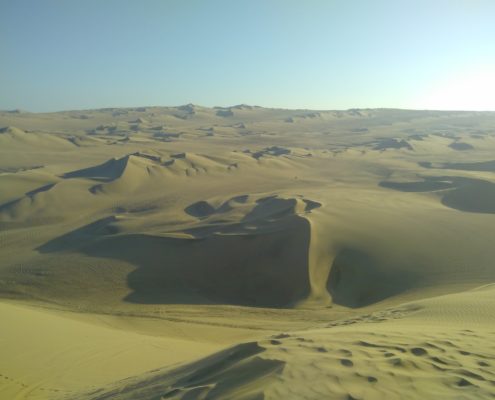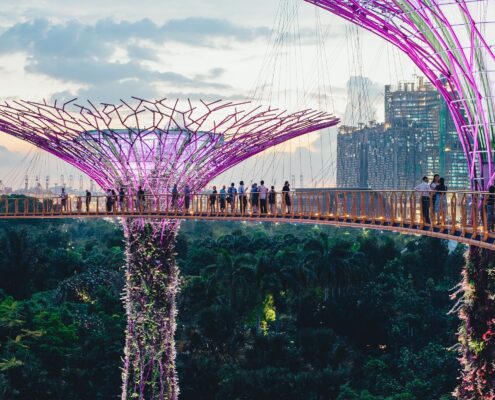 https://greenmarked.it/wp-content/uploads/2023/01/annie-spratt-UawPks200SI-unsplash.jpg
1598
2400
Riccardo Codevilla
https://greenmarked.it/wp-content/uploads/2022/01/LOGO-GREENMARKED-SITO-600x600.png
Riccardo Codevilla2023-01-20 16:14:252023-05-22 11:41:03Eco-Villages 2.0: Opportunity or Danger?
https://greenmarked.it/wp-content/uploads/2023/01/annie-spratt-UawPks200SI-unsplash.jpg
1598
2400
Riccardo Codevilla
https://greenmarked.it/wp-content/uploads/2022/01/LOGO-GREENMARKED-SITO-600x600.png
Riccardo Codevilla2023-01-20 16:14:252023-05-22 11:41:03Eco-Villages 2.0: Opportunity or Danger?Riccardo Codevilla
January 20, 2023
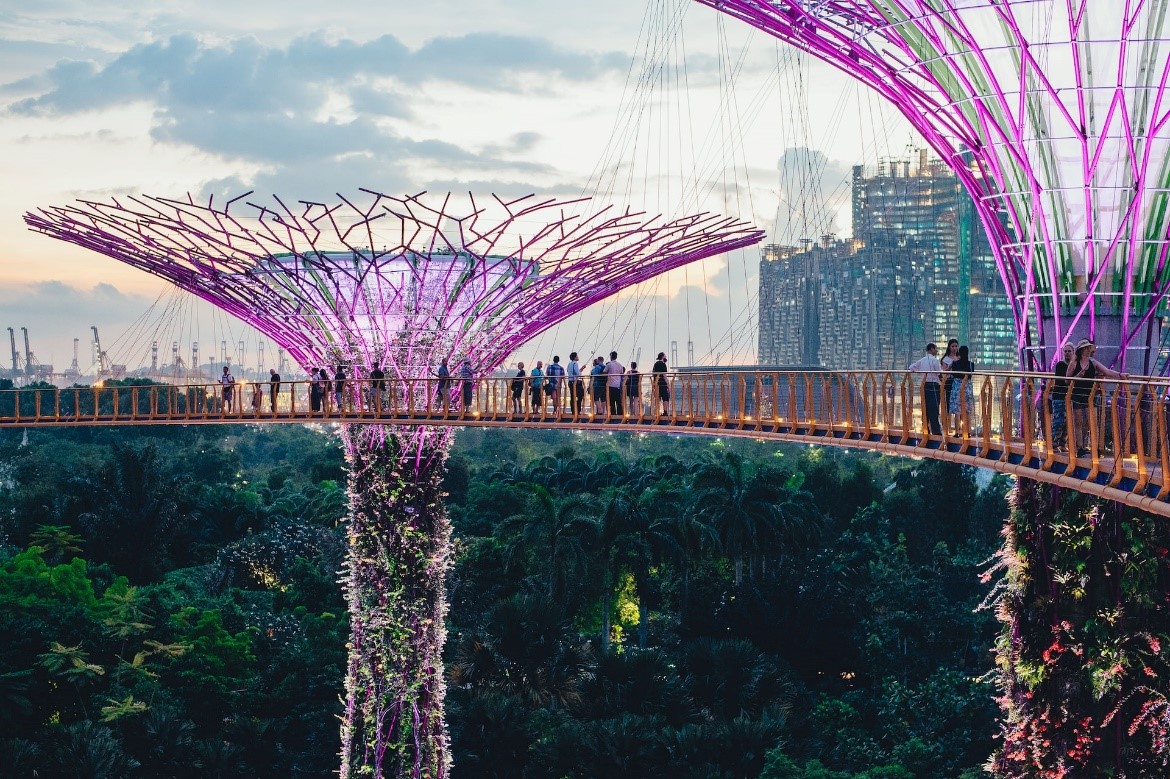
“Eco-Villages 2.0” is a highly innovative concept radically different from the traditional Eco-Villages of the 70s. They borrowed only their name. The formula of traditional Eco-Village had originated from a spark of collective awareness, and a clear and incorruptible certainty: living in the consumerist, capitalist Society is not the solution for the future. In fact, it deprives our future. Therefore, the necessity to concretely build an alternative reality to get out of modern society logic and dynamics. Not only must this be done by generating a new way of thinking and attitude toward existence, but also by physically moving away from large urban centers and founding others.
The first Eco-Villages were real residential settlements. Local projects developed in all parts of the world, each with its local peculiarities, but with a common denominator: the harmonious union of Humanity and Environment. They ranged from perhaps the most radical models, that is, a “simple” return to the past, such as the Italian Eco-Villages – where people went to live in very isolated ancient villages or buildings lacking… any technological comforts – to the most innovative ones, such as the Fryers Forest Ecovillage, in Australia [1].
The revolution was not only ideological, cultural and communitarian, but also agricultural, architectural and ecological. New, more sustainable farming techniques were emerging, and also new ways of building houses gave birth to self-sufficient, environmentally sustainable, zero-impact homes. It was the famous Permaculture movement, born in those years thanks to Bill Mollison and David Holmgred, co-creator of the Australian Village mentioned above, and many others [2].
The feeling was that of creating new Eden gardens. Was it really so? Perhaps, but with one markable difference: there was no mythical, imaginary Golden Age, but real housing centers. An “alternative” to modern urbanization, designed to produce a sustainable, self-sufficient, prosperous way of living.
These projects were so successful that they still exist today.
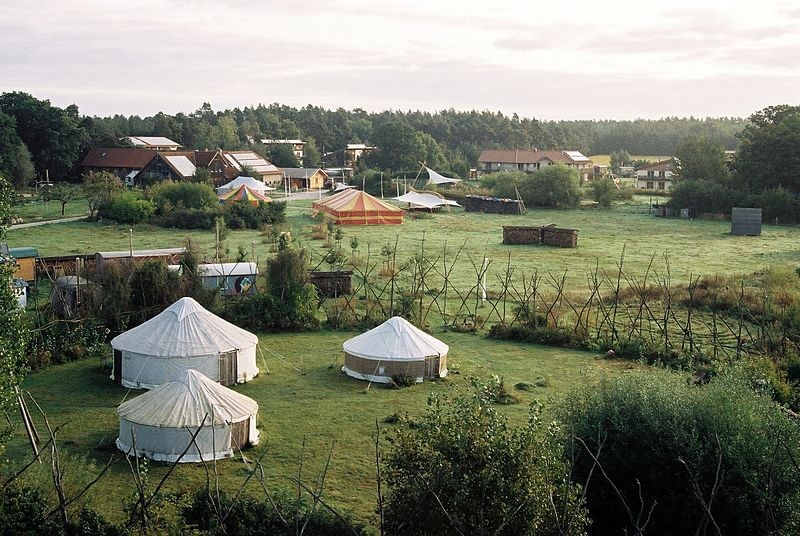
Fig. 1: The Sieben Linden Ecovillage. Photo by Michael Wüerfel – Own work, CC BY-SA 3.0, https://commons.wikimedia.org/w/index.php?curid=33591387
The Eco-Villages of the first age multiplied, upgraded, and created several structured global networks [3]. The city lockdowns of recent years seem to have given them new life, and new meaning even among the younger generations.
However, living together while respecting society and the environment, in an occasionally tech-free ideal civilization, is really enough? Perhaps not anymore. Or at least, not for everyone. Certainly not for certain economic interests.
Over the past few years, an innovative type of settlement has started to quietly appear at the horizon. From the original Eco-Villages it only takes the name and the core concept of a harmonious, cooperative and sustainable union between man and nature. It adds, however, a crucial third element: technology. Specifically, the highest and most advanced digital technology. This element alone distorts the overall picture of Eco-Villages, but the differences are much more striking the deeper we analyze the features of the so-called “Eco-Villages 2.0.“
First of all, they did not originate as a consciousness-raising bottom-up movement like their internationally resounding predecessors. On the contrary, they are the outcome of the will of certain special economic interests. A top-down approach relying on a collaboration between academia and computer science and engineering professionals, fitting into the famous process of Digital Transformation, alias the digitization of existence.
By now, one can wonder how such a paradigm shift was conceivable and how it is possible to combine a hyper-technologization of life with natural harmony.
Very simple. These new cities (they are less close to the essence of “Villages”) propose to use Artificial Intelligence (“AI”) to coordinate crops production, husbandry, waste recycling and all complex urban operations through a perfect circular economy and a new kind of permaculture, called sentient permaculture [4].
The brilliant idea that Dr. James Ehlrich clearly illustrated to a group of stakeholders and investors is the discovery of the Internet of Plants, also known as the Wood Wide Web [5]. As he explains, trees are able to communicate with each other from one side to the other of the forest they belong to. They can even send nutrients or aid to the trees in need through a fungal-mycellular network, which connects them through myriad endings.
The idea is to reproduce this mechanism not only locally, but also amongst Eco-Villages of various parts of the world thanks to the Internet and AI. The goal is to create human communities that are not only more humanly cohesive, generating and consuming zero-kilometer crops and resources, prosperous and self-sufficient (like Eco-Villages 1.0), but also technologically complex, decentralized from a central State and interconnected with each other.
They are a generative and re-generative community, which is why they are also called, perhaps more appropriately, Regenerative Villages (“Re-Gen Villages”). They are not only sustaining themselves, but self-regenerating through AI calculations.
While one can only appreciate and, perhaps, admire such a work of ingenuity, one cannot avoid seeing the dramatic importance given to technology. As usual, technology is empowered and give the role of exempting humanity from all those burdensome and tiring activities that oppress it. Freedom from the burdens of nature to fulfill oneself (in the digital world).
The farm-culture relationship, embedded in Permaculture, is thus abandoned in favor of efficiency. The “interdependence” – the symbiotic union between man and nature – is filtered by technology, which is given control of everything, for a new “independence.”
Despite the great wonders that Regenerative Villages promise us, this dream struggles to be implemented. In fact, no Regen Village yet exist anywhere in the world.
The first Eco-Villages had spread enthusiastically all over the world, also because they could be replicated by anyone with good will – obviously depending on one’s availability. This new version, instead, cannot follow the same destiny due to its high costs in terms of funds and resources. In short: they are not “affordable for everyone.”
It is no coincidence that we can find applications of the powerful technology at the base of Regen Villages in China, Korea and the wealthy cities of Singapore and Dubai, which are often cited as virtuous examples of the concept [6] [7].
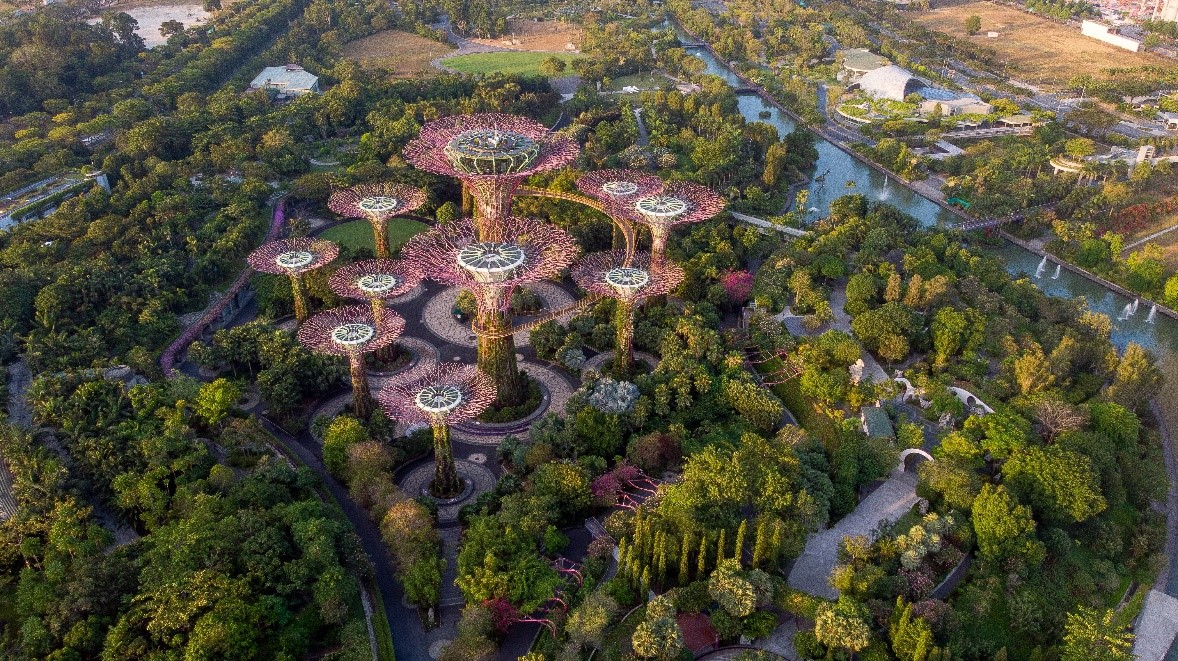
Fig. 2: Aerial shot of “Gardens by the Bay” nature park in Singapore. Will it be an anticipation and example for Eco-Villages 2.0? Free-source photo by Sergio Sala on Unsplash.
In this regard, a detail is unfortunately overlooked. At present, the technological system envisioned by Regen Villages is used only to control and facilitate urban processes in large metropolitan areas. It is not an alternative development of the human society, but the evolution of the capitalist model, with hints of egalitarian socialism (a topic that we will explore in a later article).
We see only some timid drafts of a real “Eco-Village 2.0” in the Netherlands. The very first true “Regen Village” should have opened in the Scandinavian countries in 2020, but the Covid crisis crushed a years-long negotiation thus virtually halting the opening.
The remarks of this article are not meant to discredit Regenerative Villages. On the contrary, automation and independence, which they promote, may be the key to connecting small, self-sufficient communities around the world as if they were located right next to each other. They could be the springboard to allow humanity more time to live in communion with nature, to develop art, socialization and new technologies to improve our and the planet’s well-being.
Yet, achieving this goal requires commitment. Otherwise, it may be easier for governments to integrate the extraordinary technological structure designed by Regen Villages to increase city efficiency and enable Chinese-style social control. Merging Eco-Villages 1.0 and 2.0 in an ethical manner could be a first step in that direction.
Ad maiora!
Related articles:
References:
[1] Homgren Design. (2021, 21 June). Fryers Forest Eco Village | Holmgren Permaculture Design. Holmgren Design. https://holmgren.com.au/fryers-forest/
[2] Permaculture. (2022). In Wikipedia. https://en.wikipedia.org/w/index.php?title=Permaculture&oldid=1129922923
[3] Pais, N. (2015, 21 March). GEN History. Global Ecovillage Network. https://ecovillage.org/gen-history/
[4] RegenVillages. (n.d.). RegenVillages. https://www.regenvillages.com/
[5] Singularity University (Director). (2019, 8 July). James Ehrlich—Building Self Sustaining Ecosystems—SingularityU Nordic Summit 2019. https://www.youtube.com/watch?v=X2SpWQczAos
[6] Pace, F. (2021, 1 April). Singapore, 7 esperienze da vivere (in sicurezza) nella Città del Leone. Dove Viaggi. https://viaggi.corriere.it/itinerari-e-luoghi/cards/singapore-7-esperienze-da-vivere/
[7] Leigh-Hewitson, N. (2022, 9 September). Architects in Dubai dream up a massive space-age ring to encircle the world’s tallest building. CNN. https://www.cnn.com/style/article/dubai-downtown-circle-znera-space-design-spc-intl/index.html
Cover- and preview image: The Singapore Super Tree and its surroundings. Free-source photo by Annie Spratt on Unsplash.

